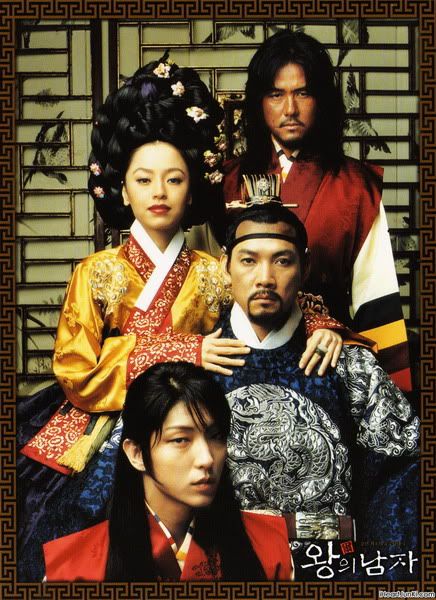Royal Tombs and Yeonsangun of the Joseon Dynasty

Geolleung, the royal tomb of the 22nd Chosun Dynasty ruler King Jeongjo and his consort Queen Hyoui
The Chosun Ilbo recently reported that the 33rd session of the UNESCO World Heritage Commission is meeting in Seville, Spain for the period of 22-30 June 2009. Part of the docket for their meeting is a recommendation by the International Council on Monuments and Sites (ICOMOS) that forty tombs, selected by Korea's Cultural Heritage Administration (CHA), be listed as World Heritage Sites. From the article:
The tombs are those of 27 Chosun kings and their queens. The tombs are a rare preservation of an entire royal lineage. The CHA last year applied to UNESCO for the registration of 40 of the 42 tombs, excluding two in the North Korean border city of Kaesong -- Jereung, the tomb of queen Sinui, the wife of the Chosun's founder king Taejo, and Hureung, the joint tomb of the Chosun's second king Jeongjong and queen Jeongan.
For those interested, there are a number of royal tombs in the far north of Seoul (Dobong-gu) and Uijeongbu that are well worth visiting. I've been meaning to get an entry posted about my problems finding the Twin Tombs of Princess Uihye and Han Gyeong-rok (의혜공주 와 한경록 쌍분묘) located in Uijeongbu, but before adding that to my site I'd like to find more information about Han Gyeong-rok. However, one of the other sites you can visit not far from my home is the royal tomb of Yeonsangun (연산군), the tenth king of the Joseon Dynasty. Some background history, courtesy of Wikipedia:
The crown prince grew up and succeeded Seongjong in 1494. He did not know what happened to his biological mother, but many corrupt officials such as Lim Sahong and You Ja Gwang revealed the truth to the king. The king was shocked; he arrested many officials who supported the idea of executing his mother Queen Jeheon and put all of them to death; this incident in 1498 is called the First Literati Purge (무오사화/戊午士禍).
In March 20, 1504, he killed two of his father's concubines as well as his grandmother, Grand Queen Insu. In the same year he killed many more Confucian scholars who had urged King Seongjong to depose his mother, and ordered the grave of Han Myung-hoi to be opened and the head cut off the corpse - [the] Second Literati Purge (갑자사화/甲子士禍).
After this massacre, many commoners mocked and insulted the king with posters written in hangul. This provoked the anger of Yeonsangun and he banned the use of hangul. He closed Seonggyungwan, the national university, and ordered people to gather young girls and horses from the whole Korean Peninsula for his personal entertainment. Many people were afraid of his despotic rule and their voices were quelled, in stark contrast to the liberal Seongjong era.
In 1506, a group of minority officials, notably Bak Wonjong, Seong Huian, Yu Sunjeong and Hong Gyeongju, plotted against the despotic ruler. They launched their coup in 1506, deposing the king and replacing him with his half-brother, Grand Prince Jinseong. The king was demoted to prince, and sent into exile. Yeonsangun died in exile that same year.
'Grand Prince Jinseong' would later reign under the title Jungjong (중종, r.1506-1544), and he's been mentioned before on my site in connection to Jo Gwang-jo and the establishment of the garden at Soswaewon in Jeollanam-do.
According to the information sign posted at the site, Yeonsangun's tomb is designed following the specifications for a prince and not those of a king. Guess that's what you get for being a jerk. The tumuli contain the bodies of Yeonsangun, Princess Consort Munseong of the Shin clan (거창군부인 신씨) - "Deposed Queen Shin" (폐비신씨), Princess Donsu (돈수옹주), and Yeonsangun's son-in-law. To get to the site, take Line 1 to Changdong Station (창동역) and then hop on bus number 1161 until it reaches the tomb.





Tumuli | 800 Year Old Ginkgo Tree (은행나무) | Tomb Diagram | Statue | Flower
For those of you who thought Yeonsangun's name sounded familiar, he has been represented in a few different media sources. The K-drama Dae Jang Geum (대장금) starts off with the poisoning of Lady Yun - Yeonsangun's mother - and tells the story of the first female royal court physician of the Joseon Dynasty during the reigns of Seongjong, Yeonsangun, and Jungjong based on historical information gathered from the Annals of the Joseon Dynasty (조선왕조실록). For a very thorough review of the series I would suggest this piece from SPCNET.
The character of Yeonsangun also appears in the drama The King and I (왕과 나), which finished airing in 2008. The series chronicles the story of Kim Cheoseon, a eunuch who enters the palace to protect a friend who has been chosen as a royal concubine. This concubine later becomes Queen Jeheon, the royal title of Yeonsangun's mother, Lady Yun. For more information on this series you can get the scoop here from CoolSmurf.
Finally, the reference most people will be familiar with is Yeonsangun's presence as the eponymous king from the 2005 movie The King and the Clown (왕의 남자). A quick synopsis is available through Seoul Style, and Wikipedia also has some information. Below is a poster for the movie with Yeonsangun, his concubine Suk-yong Jang Nok-su (숙용 장녹수), and two court jesters who catch the king's attention.
